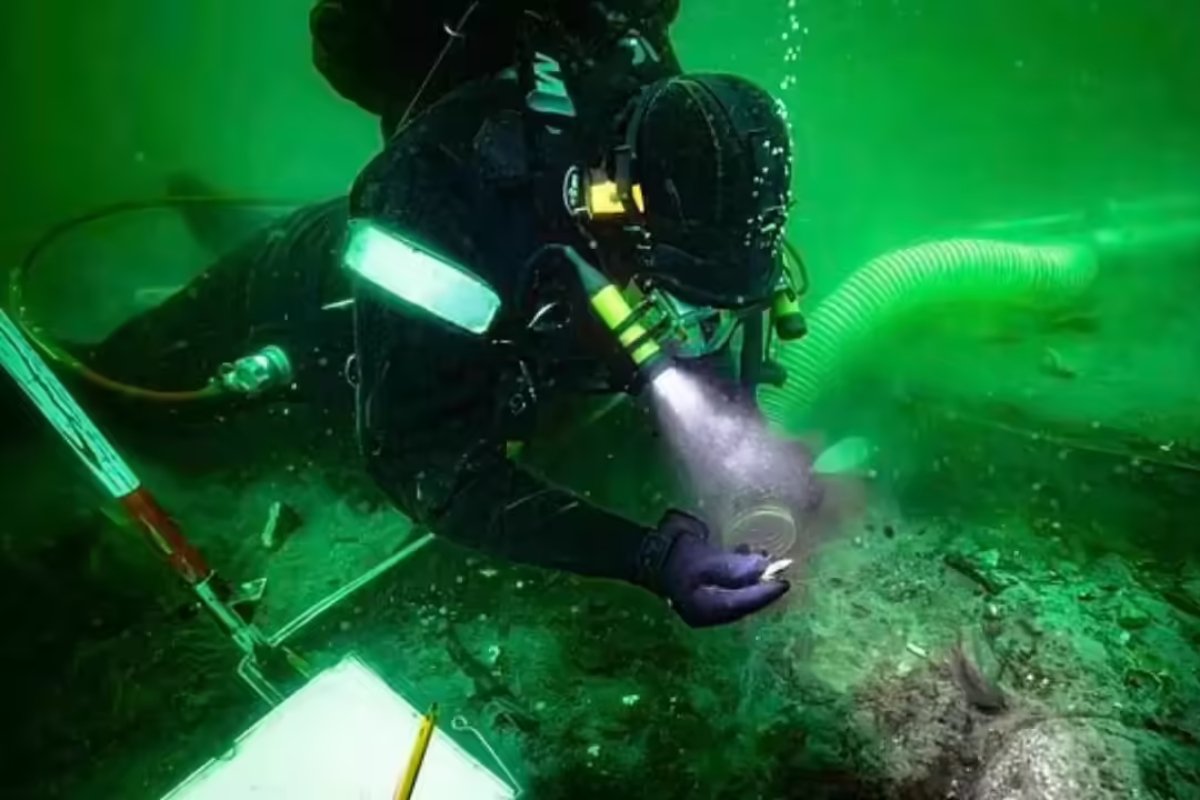Archaeologists working off the coast of Denmark have uncovered an exceptionally well-preserved submerged site described as a “prehistoric time capsule.” Hidden for nearly 8,500 years beneath the waters of Aarhus Bay, this ancient shoreline settlement has remained intact thanks to a rare combination of rapid flooding and low-oxygen sediments — conditions that froze an entire fragment of human prehistory in time.
A Mésolithic Shoreline Buried by Rising Seas
The site was discovered during underwater surveys aimed at mapping ancient coastlines that disappeared when sea levels rose at the end of the last Ice Age. As glaciers melted, coastal communities across Northern Europe saw their settlements engulfed by advancing waters — a process that, in some cases, created natural sealed environments.
Aarhus Bay appears to be one of them. The rising sea covered the area quickly enough to protect organic materials that would normally decompose within years.
An Extraordinary Level of Preservation
Researchers describe the discovery as “exceptional” because of the sheer quality of what survived. Among the objects found:
- Wooden pieces, including structural elements
- Stone tools
- Nuts, notably hazelnuts
- Other organic remains normally lost in typical archaeological layers
The low-oxygen conditions beneath the seabed acted like a protective vault, preventing bacteria and fungi from breaking down the materials. This unique preservation is precisely why scientists refer to the site as a “time capsule.”
A Glimpse Into Daily Life 8,500 Years Ago
The settlement dates back to the late Mesolithic era, a period often overshadowed by later Neolithic farming cultures. Yet the findings confirm that these coastal hunter-gatherer groups had complex behaviors and relied heavily on the shoreline for food, tools, and shelter.
The presence of hazelnuts suggests seasonal harvesting; wooden structures point to semi-permanent occupations; and stone tools reflect a refined knowledge of the region’s resources.
Far from a simple scatter of artifacts, this is a fully contextualized snapshot of life at a moment when human societies were adapting to dramatic environmental changes.
A Rare Window Created by Nature, Not Intention
Despite the evocative name, researchers emphasize that this is not a deliberately constructed time capsule. Rather, it is a natural archaeological phenomenon: a settlement sealed by the sea before erosion could destroy it.
Such perfect preservation is extremely uncommon. Most prehistoric coastlines vanished with almost no trace. Aarhus Bay is now considered one of the most valuable underwater archives for studying early post-glacial Europe.
A Discovery With Global Scientific Importance
The find is already drawing attention from international research teams. Its significance lies in three key aspects:
- Age — at roughly 8,500 years old, it offers insight into a poorly documented period.
- Preservation — organic materials provide information impossible to obtain from stone alone.
- Context — the setting reveals how rapid sea-level rise reshaped human settlements after the Ice Age.
This discovery is expected to contribute to major studies on climate adaptation, technological transitions, and the evolution of early Northern European societies.
A Frozen Moment From Humanity’s Distant Past
The underwater site of Aarhus Bay is more than a collection of artifacts. It is a rare moment of prehistory — a piece of daily life suspended for millennia, untouched until now.
As excavations continue, archaeologists believe the area may reveal even more about how ancient communities lived, moved, and adapted to a world transformed by rising waters.
While many prehistoric sites are little more than scattered traces, this one stands apart: a genuine, accidental time capsule delivered by nature, offering a direct window into human life nearly nine millennia ago.
